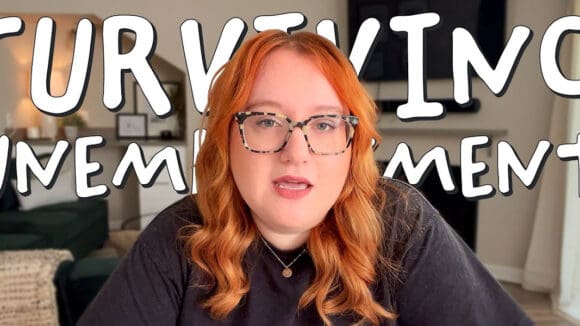

This 12-Minute Video Is Loaded With Constructive Advice For Out-Of-Work Animation Artists
Storyboard artist Meridian Gray Culpepper has posted a new video ruminating on lessons learned over the past 11 months as an unemployed animation artist in L.A.
At the height of the pandemic, Culpepper served as a story intern at Pixar Animation Studios and later worked on the series WondLa at Skydance Animation. She also regularly teaches animation and storyboarding techniques on her Youtube channel. Her latest video, while still educational, is far more personal than the kind of content she usually puts out.
According to Culpepper, “The personal, difficult stuff about being an artist is just as relevant as the educational stuff.”
Culpepper’s (Extremely Relatable) Situation
Explaining the current state of affairs in her own work life, Culpepper says that she has been without animation work for just about 11 months now. She says that although she was diligent about saving while gainfully employed, regularly putting away around 30% of her income, her rainy day funds have all dried up.
I know jobs will appear again. So, in the meantime, I’m going to do what I’ve always done and what I’ve done to get here in L.A.: grind and hustle. This is a reality check.
Transferable Skills
It’s easy to underestimate how transferable an artist’s skills can be in other lines of work. Culpepper says her niche skillset as a storyboard artist may not seem helpful in different industries, but that is not actually the case:
If you are working in animation or you’re aiming to work in animation, chances are, you are a creative individual, which means you may have other untapped creative skills that can be successfully transferred to work in other industries while you are waiting for your next gig.
Culpepper goes through a laundry list of jobs where artistic skills are not just useful but obligatory, including photography, videography, website design, Powerpoint presentations, and designing brochures.
Time to Pivot
“Being an artist also comes with the struggle,” Culpepper argues in the video. “Hustling and pivoting come with the territory of following your dream.”
She’s not just talking about down times here. Culpepper argues that artists must be willing to work for their craft, whether things are going well or poorly. In her own case, Culpepper started dedicating her time out of work to an extreme makeover of her portfolio, creating new sub-portfolios to show off particular skills that may be useful in other industries.
Part-Time Work
Culpepper spent years working in food service before she became a full-time artist. It’s a field she’s familiar with but one she’s not eager to return to at the expense of her artistic ambitions:
The way I see it, if it’s even remotely difficult for me to get a job in retail or food, I might as well focus all of that effort into getting a job that pays higher, that I can use one of my transferable skills to get.
Use Your Network
One thing that Culpepper has observed talking with recruiters for the last 11 months is that they are only so helpful. They can open doors, but they’re not the decision-makers. Culpepper says that talking directly with directors and producers has yielded more positive results for her. “Ultimately, these are the people that will decide to hire you, not the recruiter,” she explains. As a matter of courtesy, however, she recommends avoiding cold calls to project leads you’re unfamiliar with. Stick to contacts you already know.
Stay Active on Social Media
Doomscrolling Instagram probably isn’t helpful for out-of-work artists already feeling down, but Culpepper says staying active on social media in other, more productive ways is essential.
Do not underestimate the power of being active on your socials. On Linkedin, on Instagram specifically. The more you post, the more eyeballs will be on those posts, and more eyeballs will go to your profile.
She argues that it also proves to potential employers that an out-of-work artist with a gap in their resume stayed active and creative during their time away from the industry. That could be the difference between two otherwise equally qualified candidates.
Indie Animation Isn’t For Everyone
One of Culpepper’s most relatable arguments comes as she explains why the independent animation scene isn’t for her. “I thrive on a 9-5 stability. The mundanity of a quiet office.”
For many artists, helming their own production isn’t an attractive prospect, no matter how small. Plenty of people find greater pleasure in doing a job assigned to them and clocking out at the end of the day. Culpepper argues that everyone must do what’s right for them and that meeting one’s emotional necessities is as vital as fulfilling physical needs.
Take Care of Yourself
Culpepper says that, above all, out-of-work artists need to remember to be conscious of their mental health:
It’s okay to be sad. It’s okay to be hopeful. It’s okay to feel hopeless. It’s okay to feel like you don’t want to achieve anything today. It’s okay if you feel like you want to achieve everything today. Let yourself cycle through the process. The worst thing you can do is force yourself to be happy or force yourself to stay in a pit.

.png)